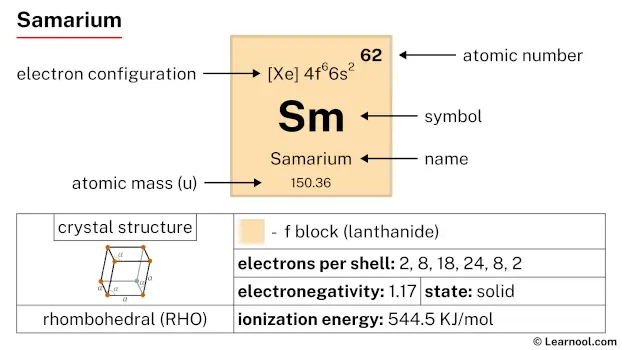
Samarium (Sm) is a chemical element of the periodic table, located in the period 6, and has the atomic number 62. It is the sixth element in the lanthanide series. It is a silvery-white metal, which is named after Colonel Samarsky, a Russian mine official. It is a highly reactive metal and is counted as one of the rare earth elements.
On periodic table
| group | ⇨ | 1 | 2 | 3 | 4 | 5 | 6 | 7 | 8 | 9 | 10 | 11 | 12 | 13 | 14 | 15 | 16 | 17 | 18 |
| period | ⇩ | ||||||||||||||||||
| 1 | 1 H 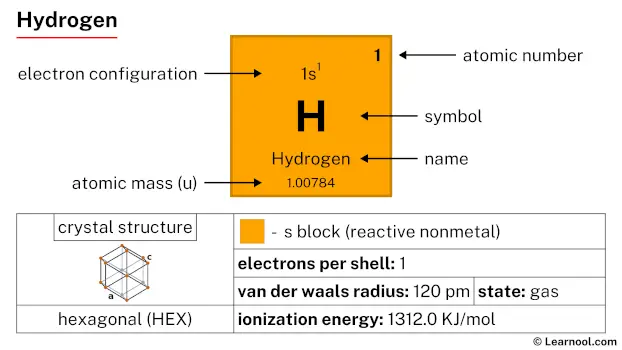 Hydrogen |
2 He  Helium |
|||||||||||||||||
| 2 | 3 Li  Lithium |
4 Be 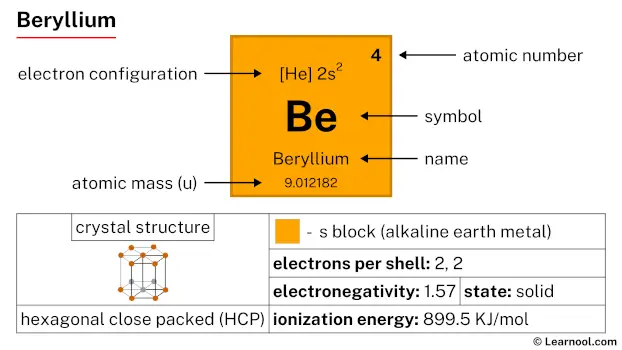 Beryllium |
5 B 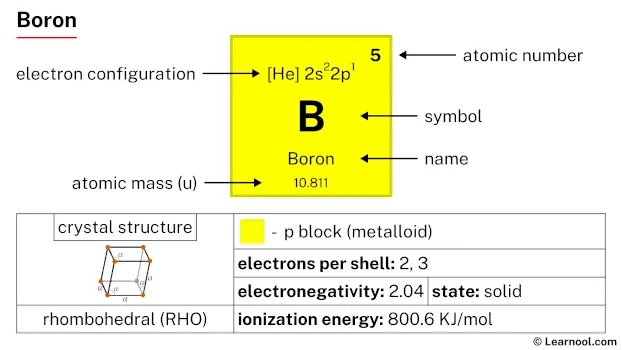 Boron |
6 C  Carbon |
7 N 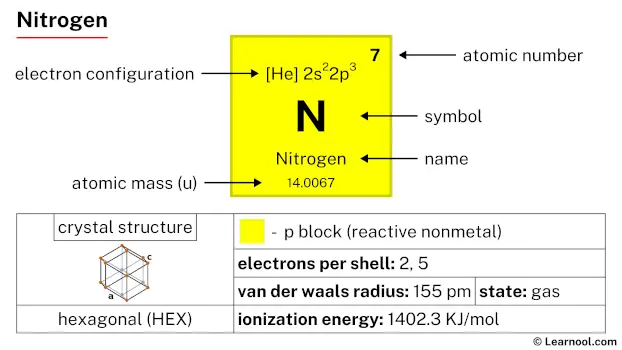 Nitrogen |
8 O 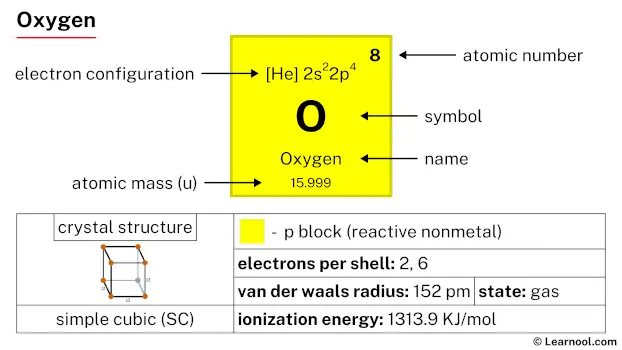 Oxygen |
9 F 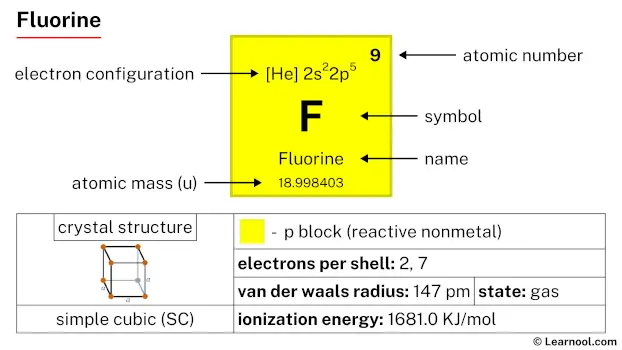 Fluorine |
10 Ne 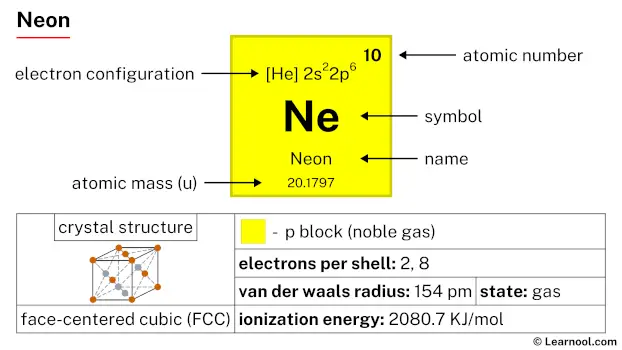 Neon |
|||||||||||
| 3 | 11 Na 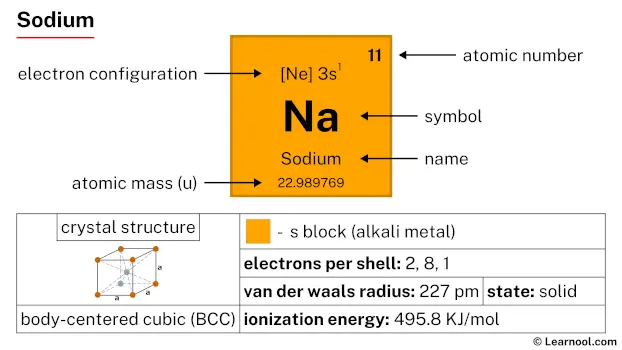 Sodium |
12 Mg 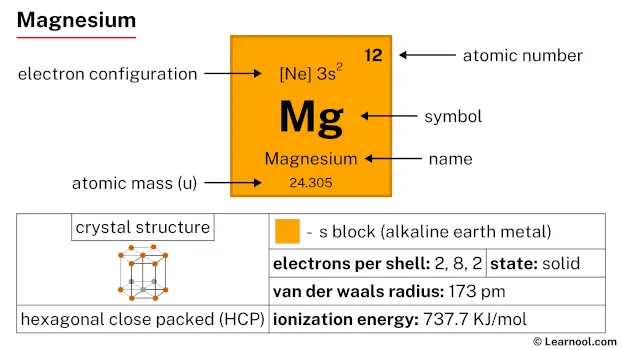 Magnesium |
13 Al  Aluminium |
14 Si Silicon |
15 P 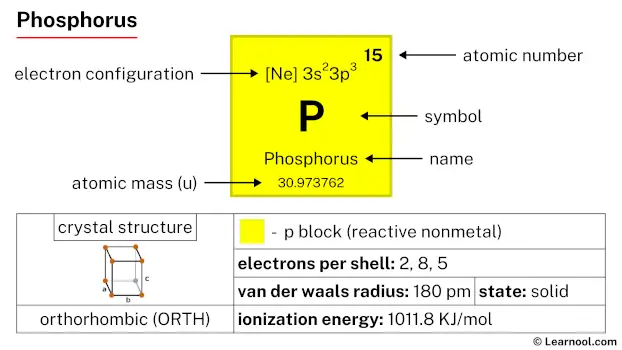 Phosphorus |
16 S 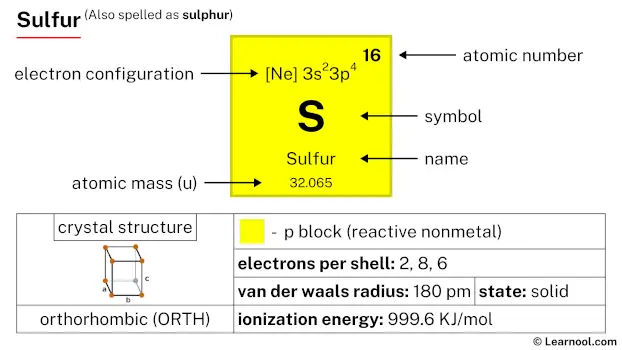 Sulfur |
17 Cl 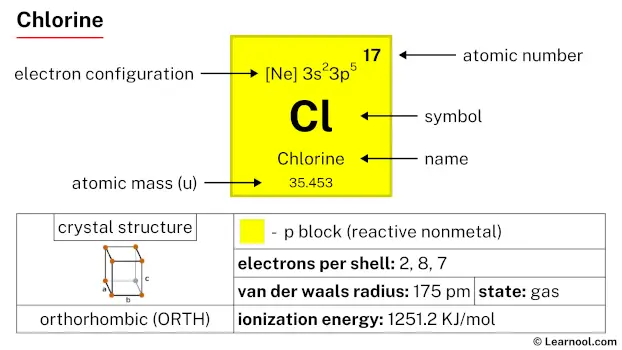 Chlorine |
18 Ar 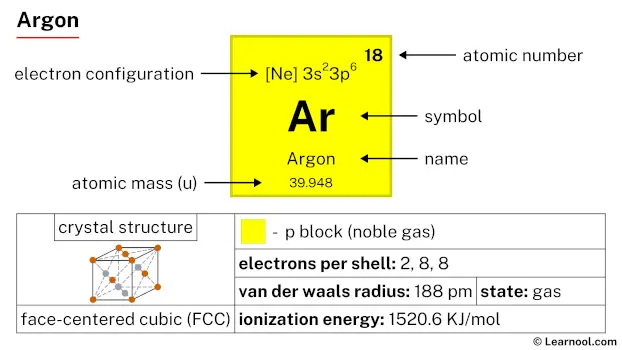 Argon |
|||||||||||
| 4 | 19 K 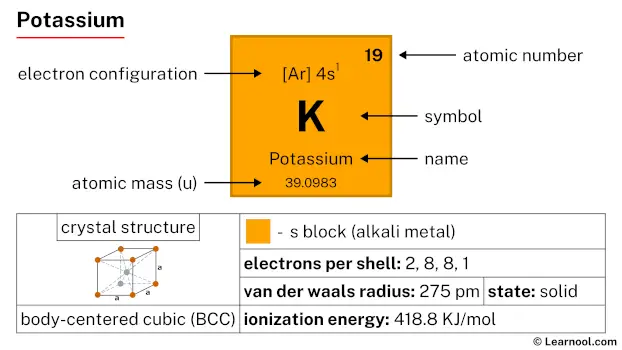 Potassium |
20 Ca 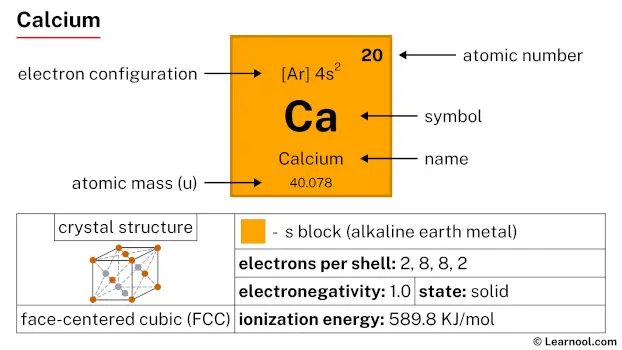 Calcium |
21 Sc 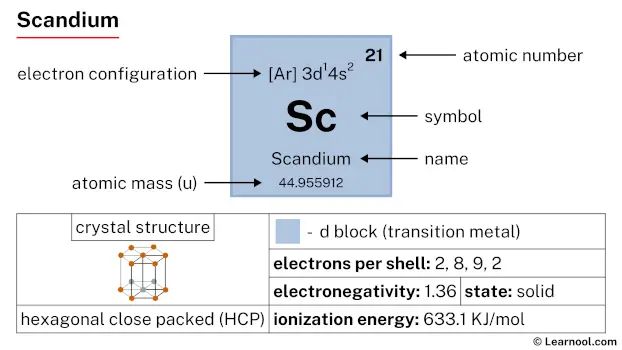 Scandium |
22 Ti 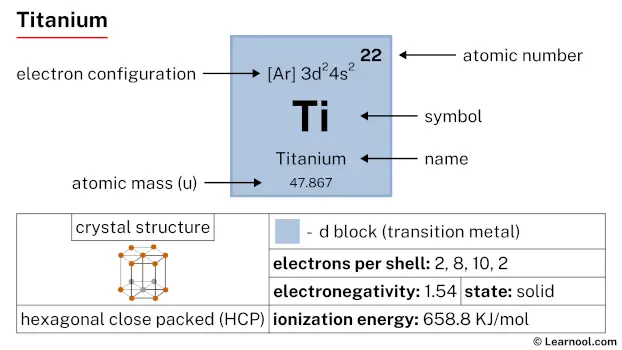 Titanium |
23 V 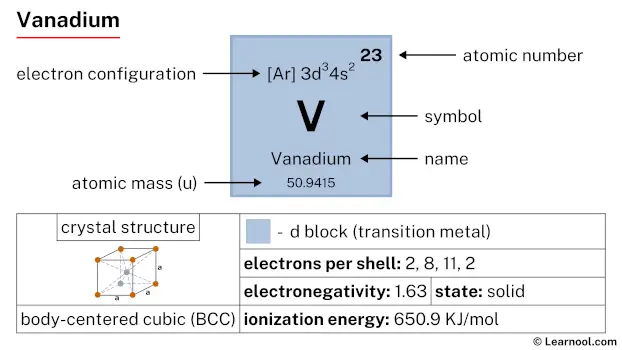 Vanadium |
24 Cr 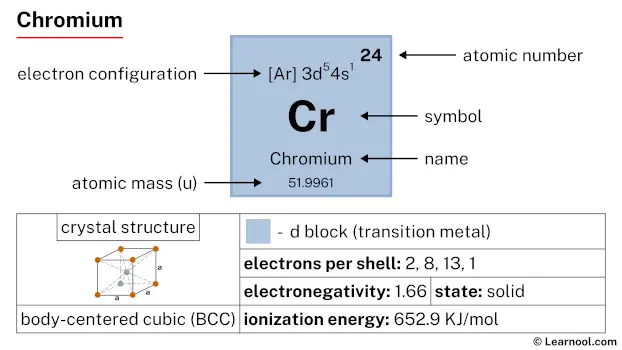 Chromium |
25 Mn 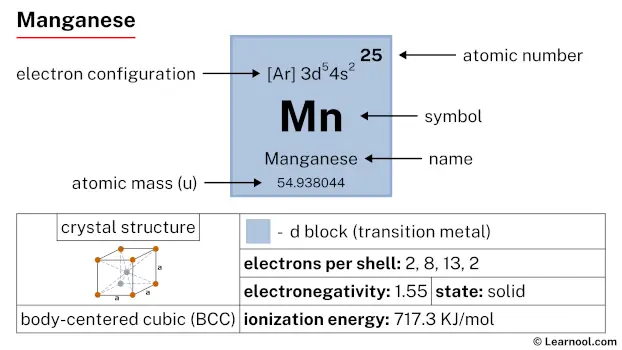 Manganese |
26 Fe 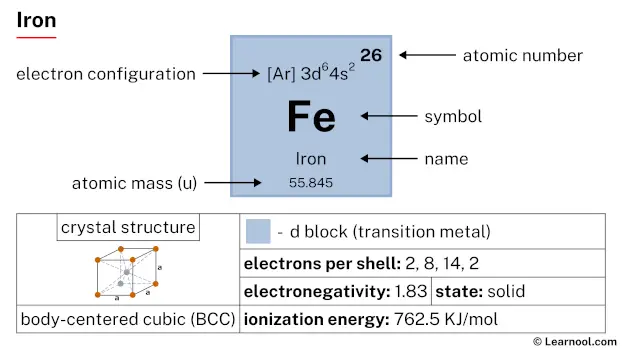 Iron |
27 Co 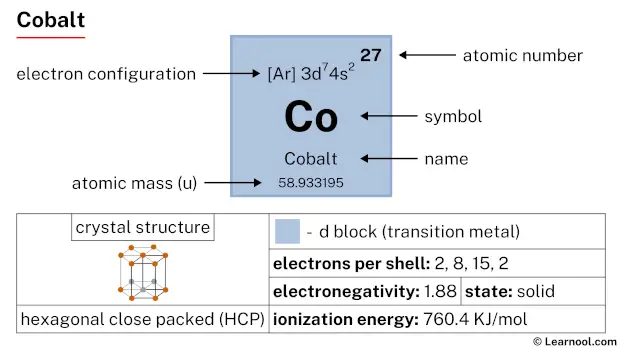 Cobalt |
28 Ni 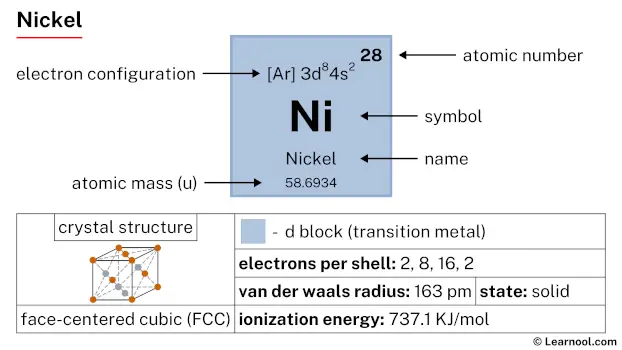 Nickel |
29 Cu 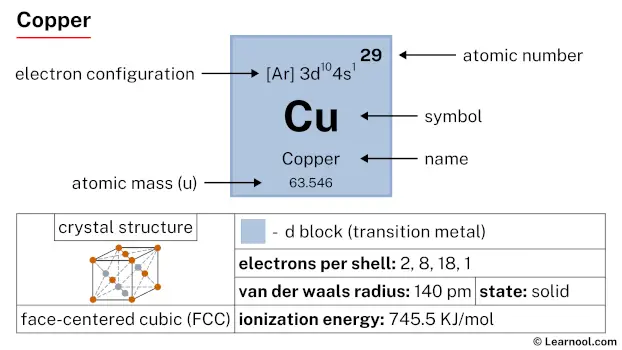 Copper |
30 Zn  Zinc |
31 Ga 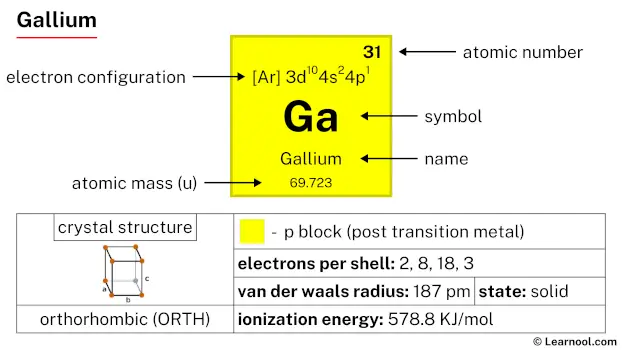 Gallium |
32 Ge 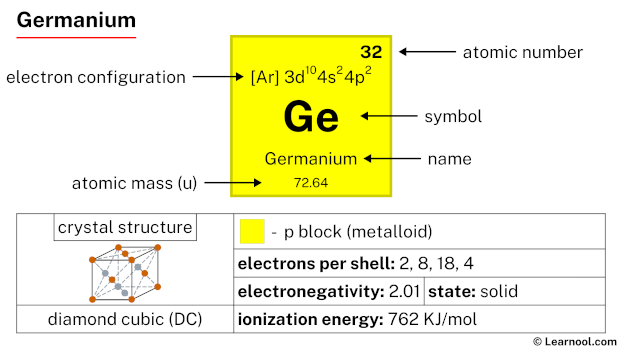 Germanium |
33 As 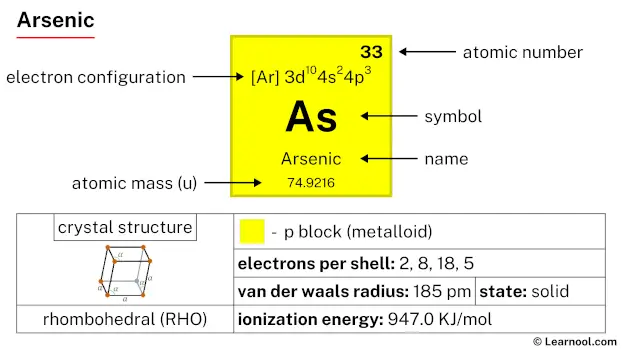 Arsenic |
34 Se 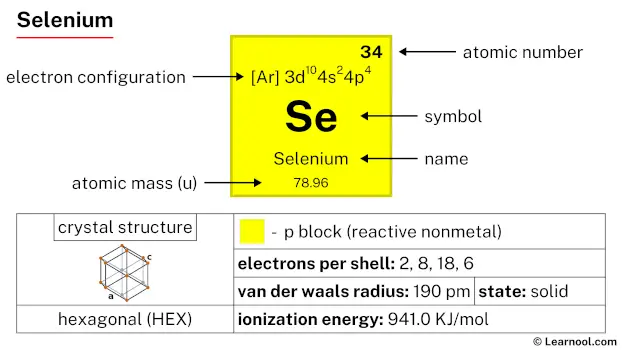 Selenium |
35 Br 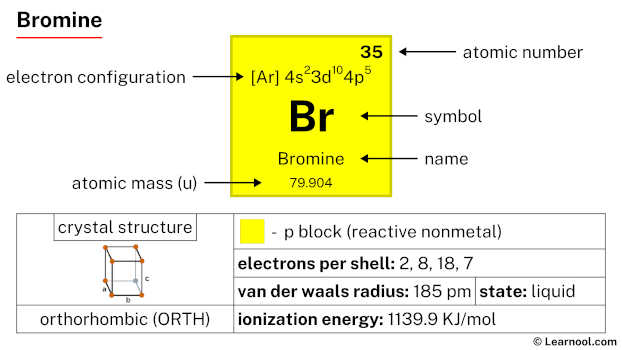 Bromine |
36 Kr  Krypton |
|
| 5 | 37 Rb 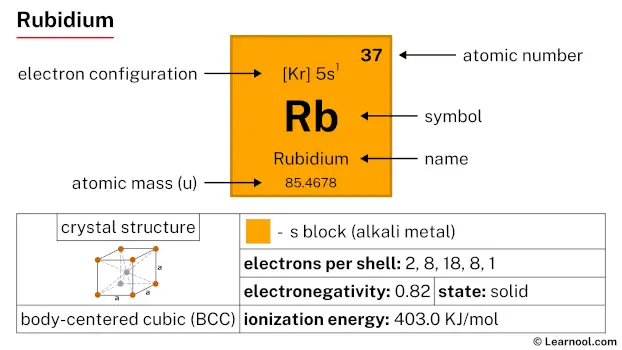 Rubidium |
38 Sr 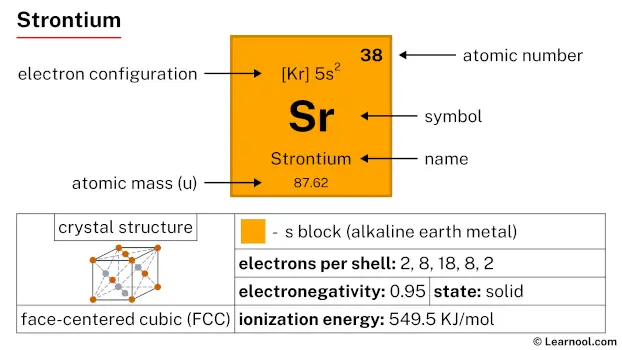 Strontium |
39 Y 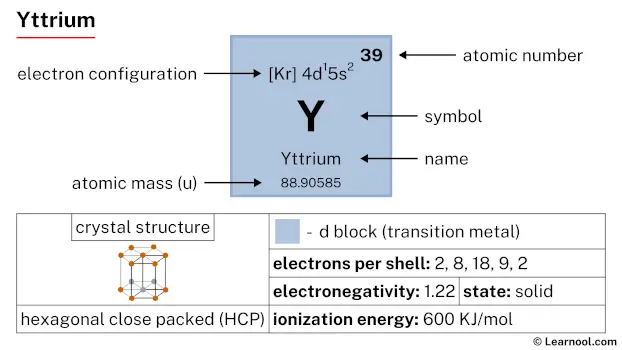 Yttrium |
40 Zr 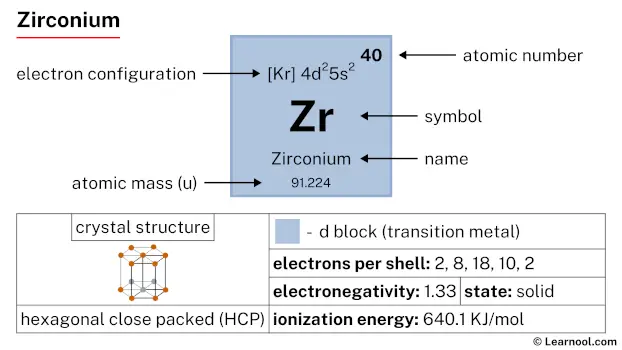 Zirconium |
41 Nb 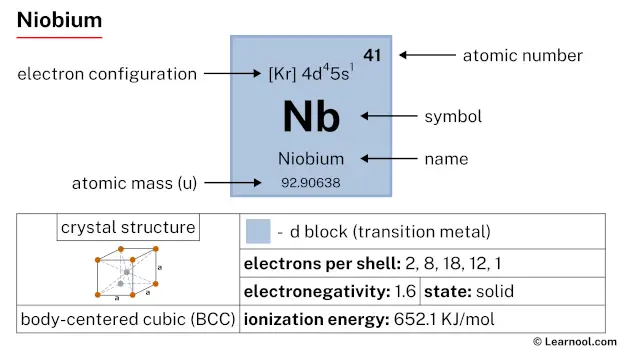 Niobium |
42 Mo 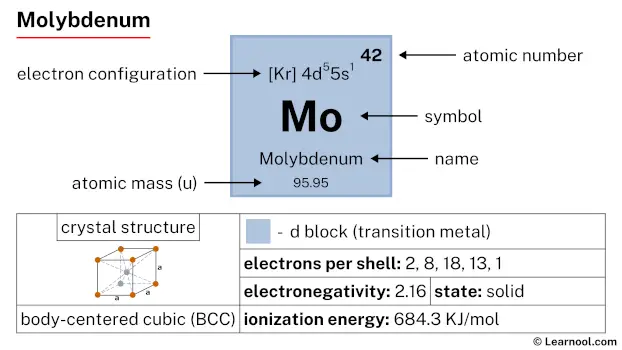 Molybdenum |
43 Tc 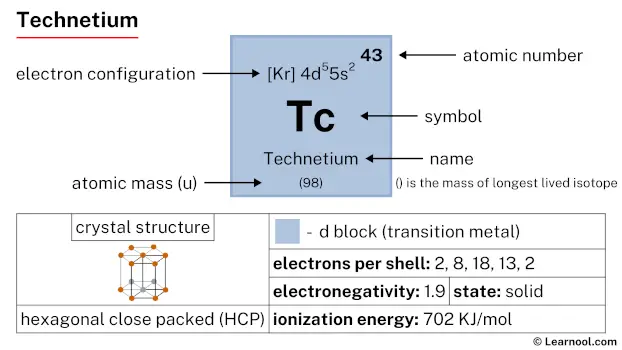 Technetium |
44 Ru 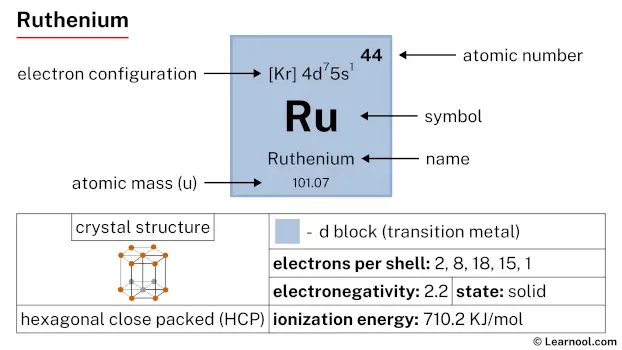 Ruthenium |
45 Rh 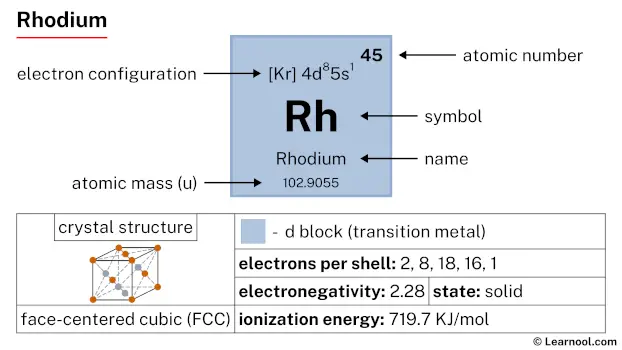 Rhodium |
46 Pd  Palladium |
47 Ag  Silver |
48 Cd 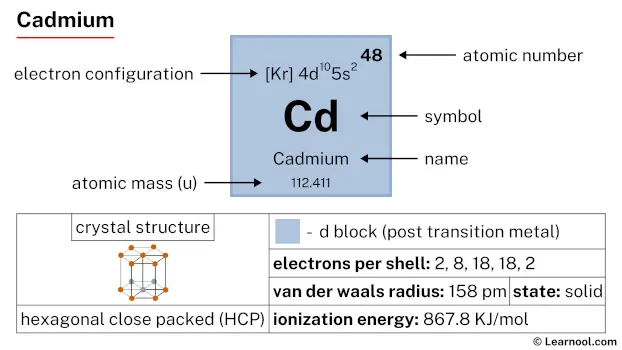 Cadmium |
49 In 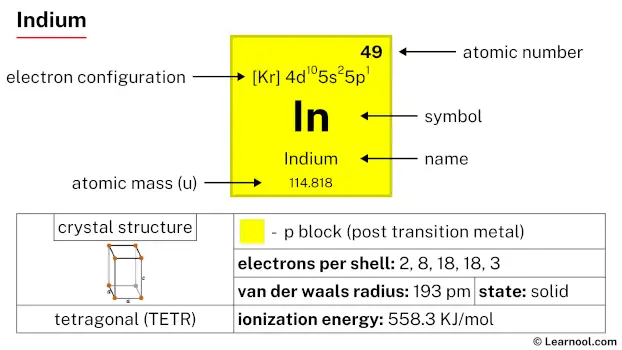 Indium |
50 Sn 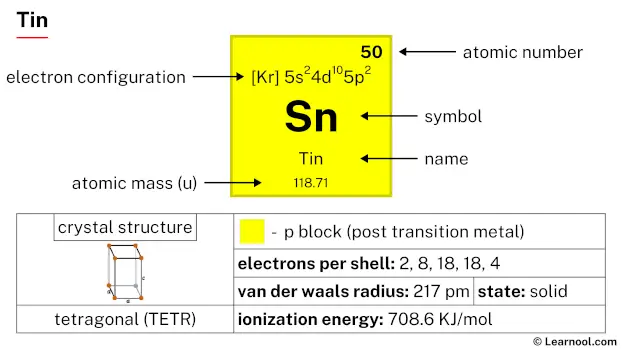 Tin |
51 Sb 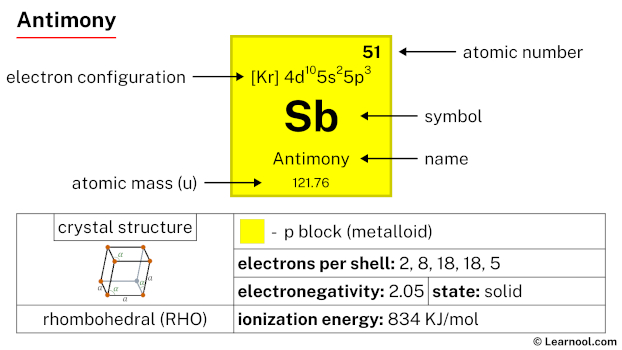 Antimony |
52 Te 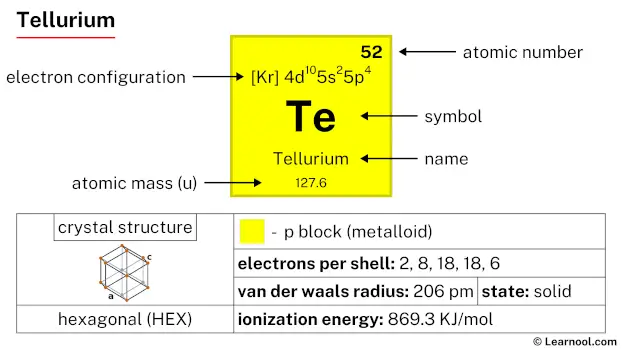 Tellurium |
53 I 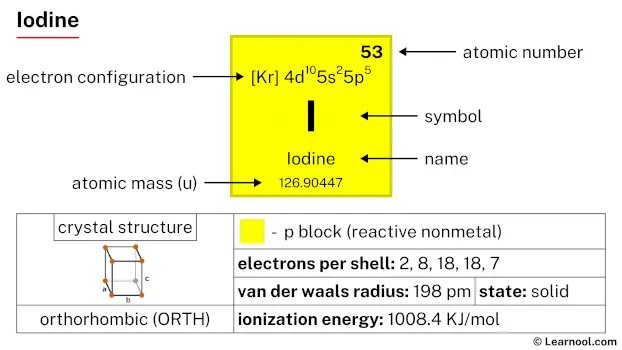 Iodine |
54 Xe 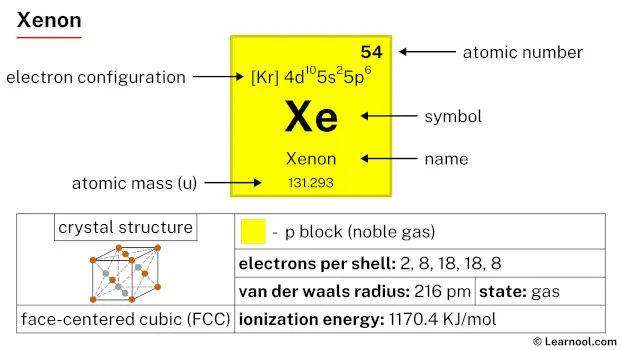 Xenon |
|
| 6 | 55 Cs 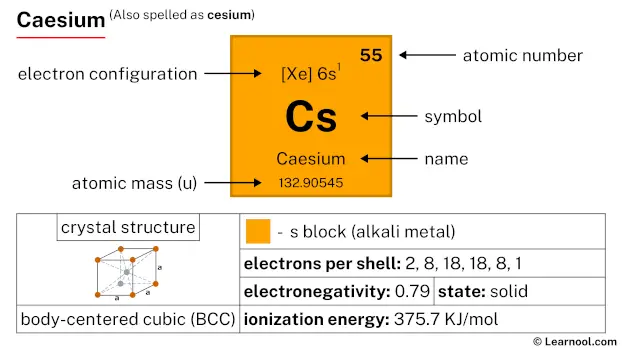 Caesium |
56 Ba 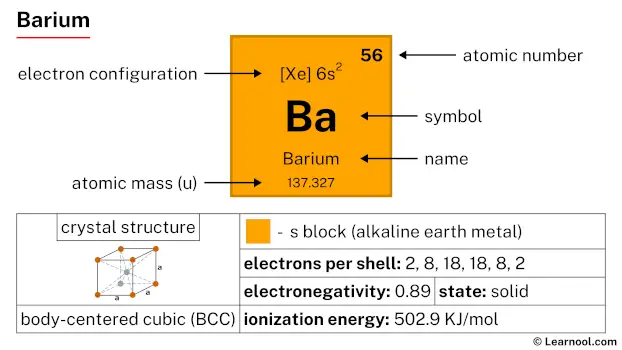 Barium |
72 Hf 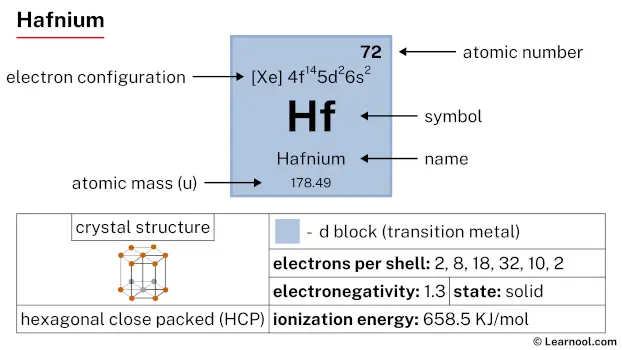 Hafnium |
73 Ta 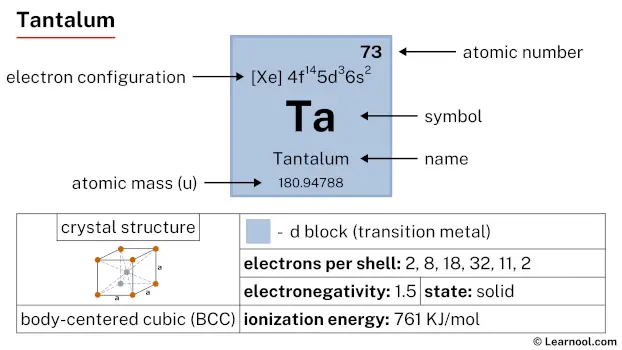 Tantalum |
74 W 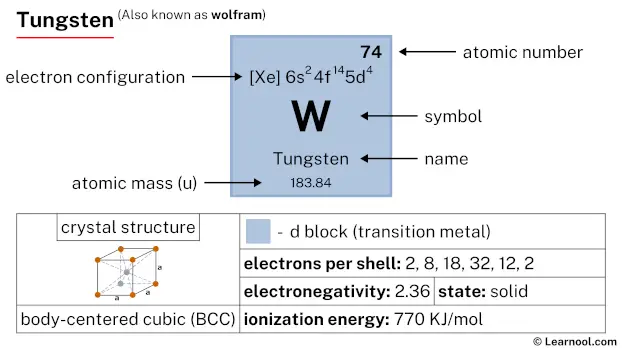 Tungsten |
75 Re 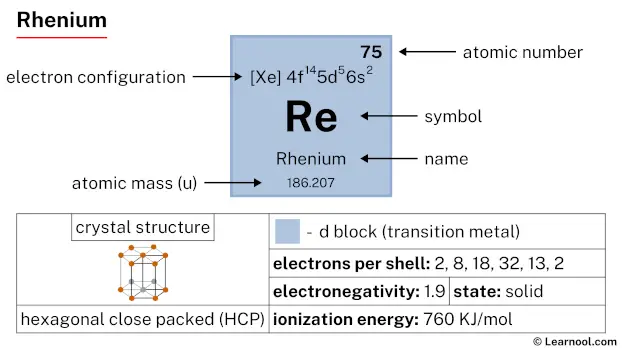 Rhenium |
76 Os 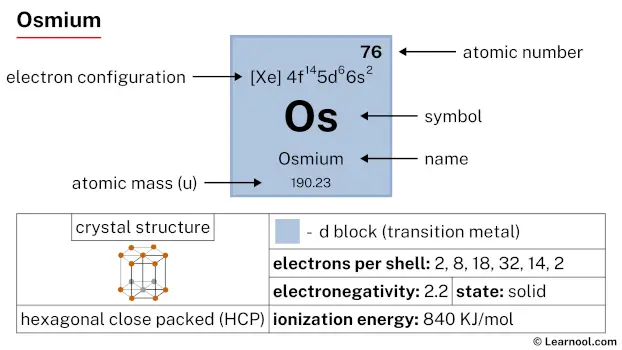 Osmium |
77 Ir 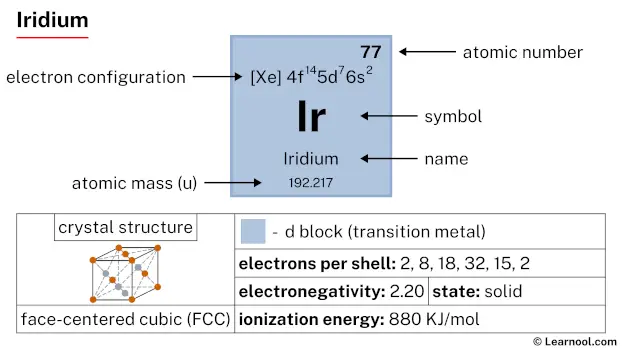 Iridium |
78 Pt  Platinum |
79 Au  Gold |
80 Hg 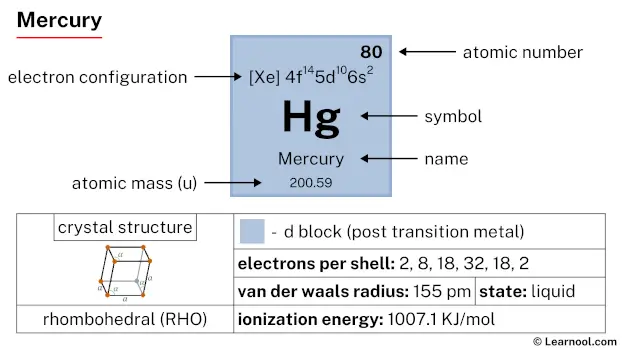 Mercury |
81 Tl 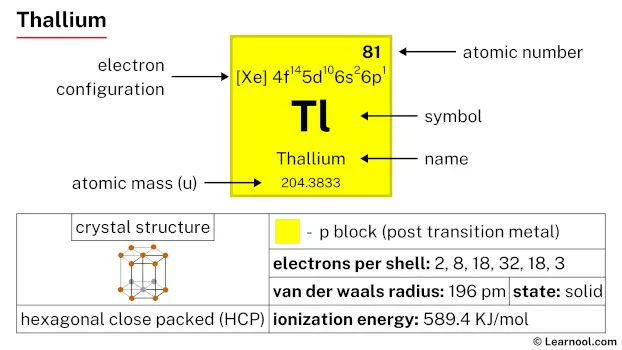 Thallium |
82 Pb  Lead |
83 Bi 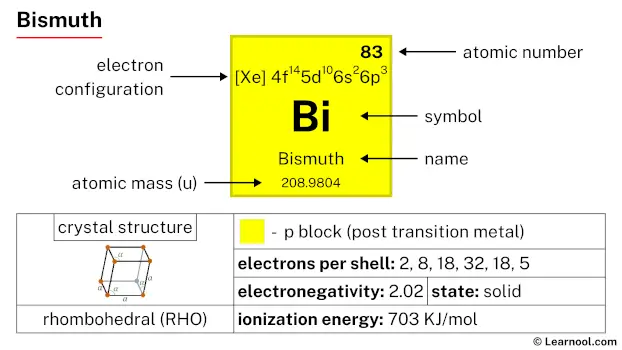 Bismuth |
84 Po 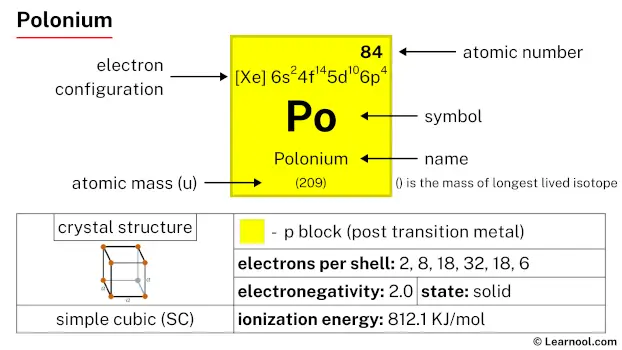 Polonium |
85 At 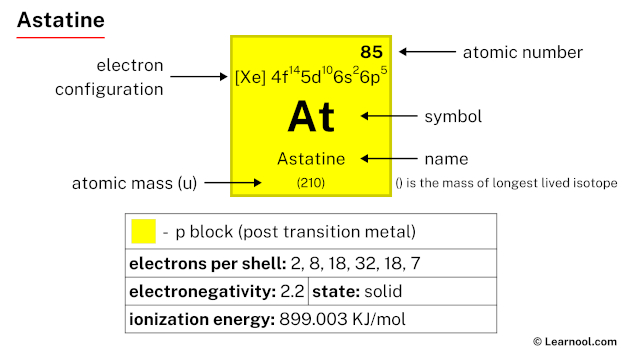 Astatine |
86 Rn 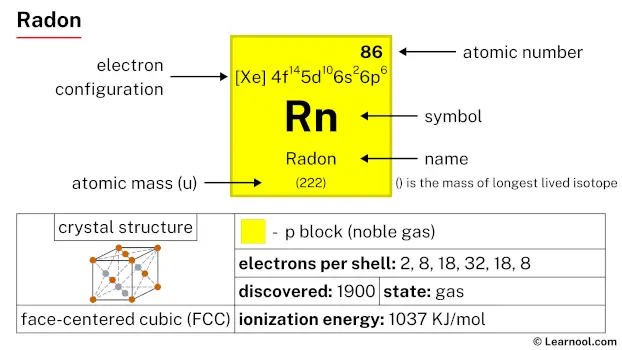 Radon |
||
| 7 | 87 Fr 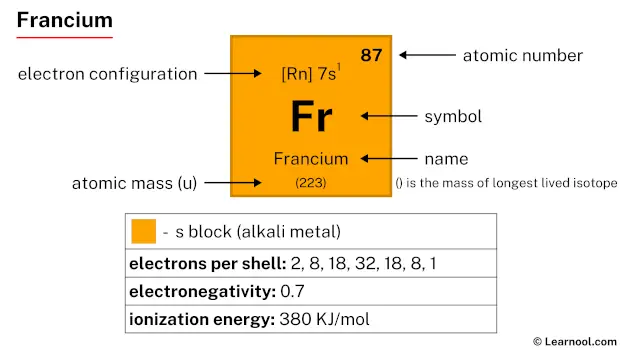 Francium |
88 Ra 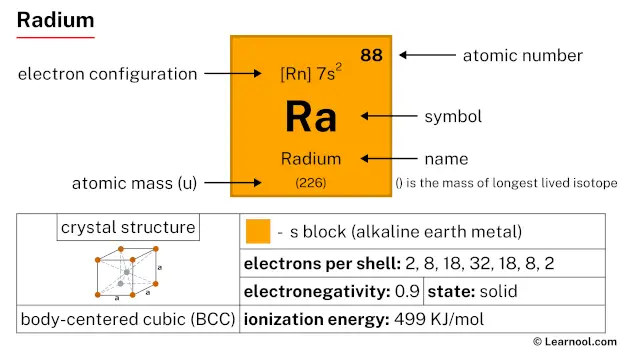 Radium |
104 Rf 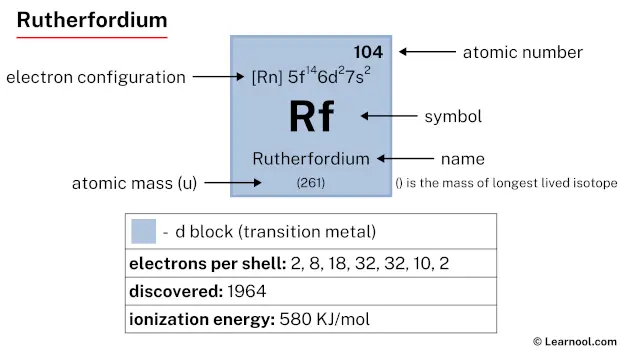 Rutherfordium |
105 Db 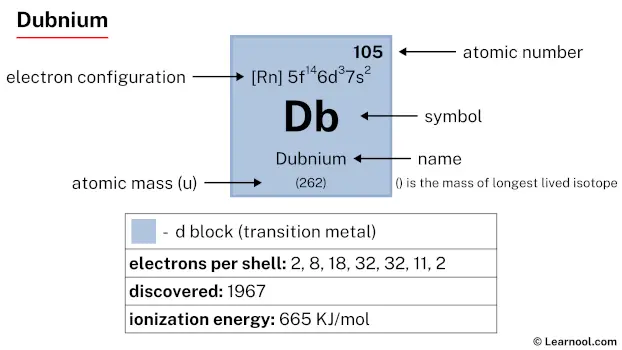 Dubnium |
106 Sg 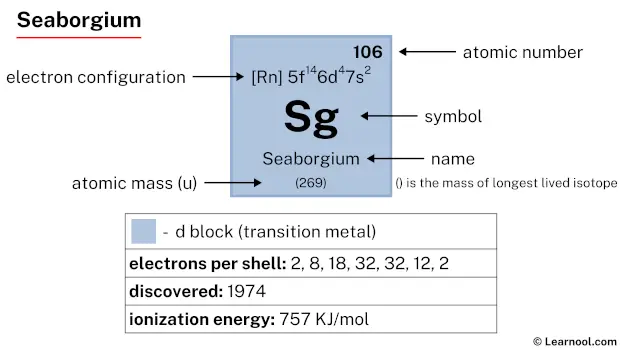 Seaborgium |
107 Bh 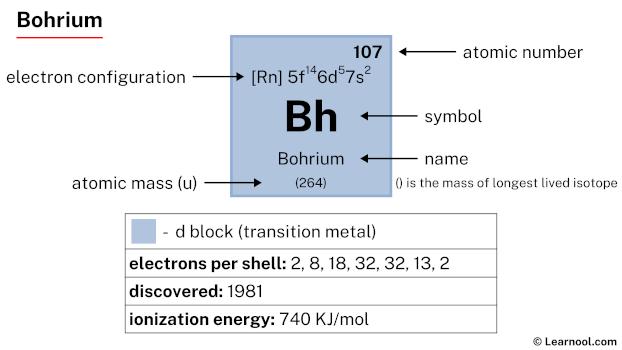 Bohrium |
108 Hs 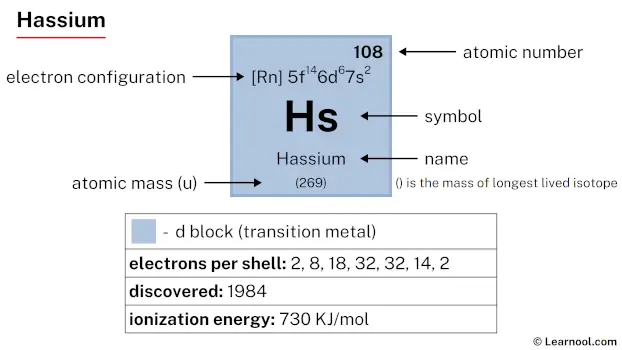 Hassium |
109 Mt 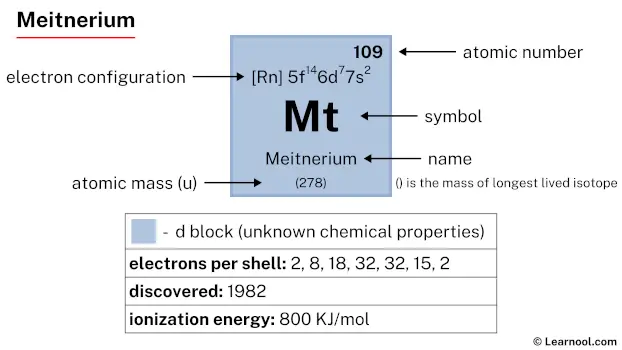 Meitnerium |
110 Ds 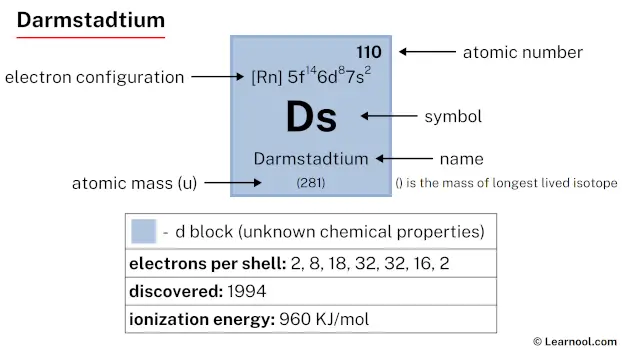 Darmstadtium |
111 Rg 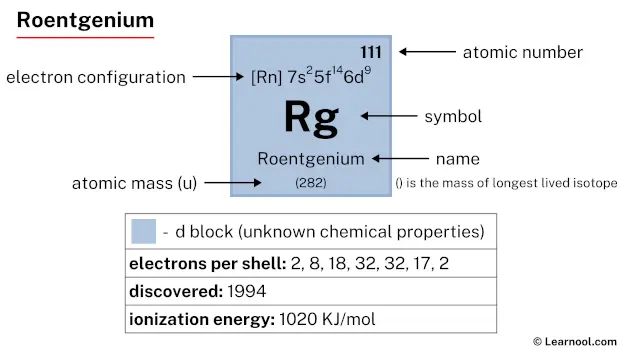 Roentgenium |
112 Cn  Copernicium |
113 Nh 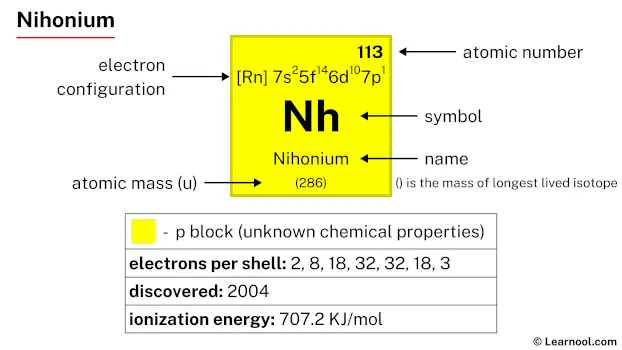 Nihonium |
114 Fl 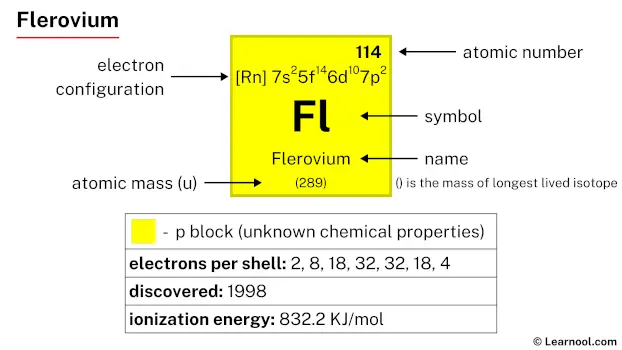 Flerovium |
115 Mc 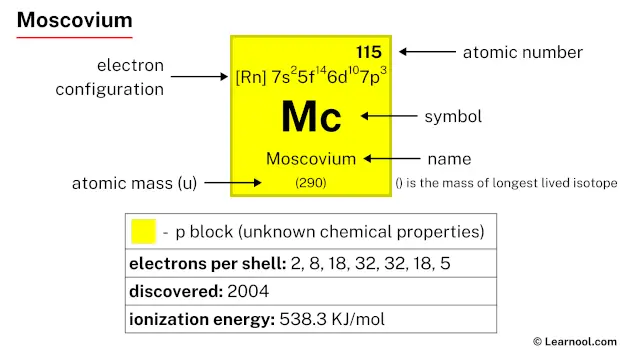 Moscovium |
116 Lv 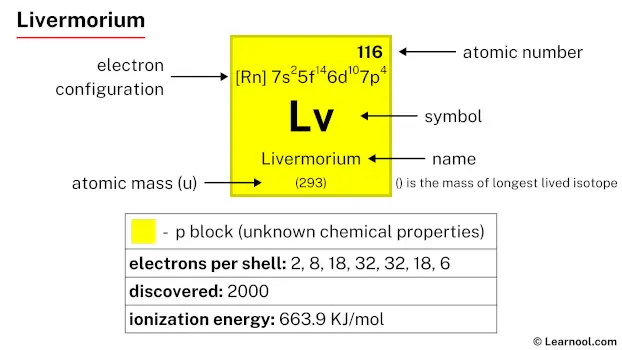 Livermorium |
117 Ts 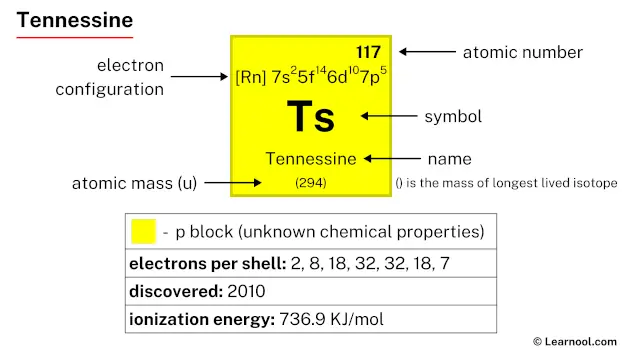 Tennessine |
118 Og 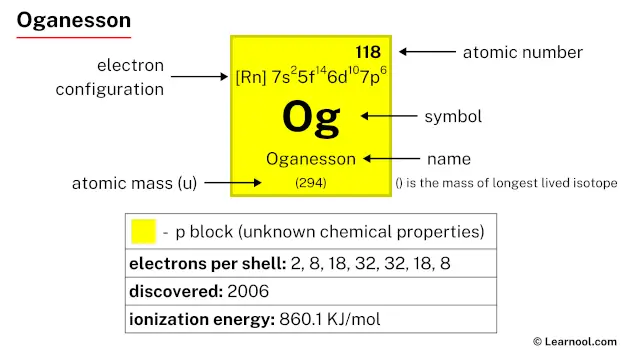 Oganesson |
||
| 57 La 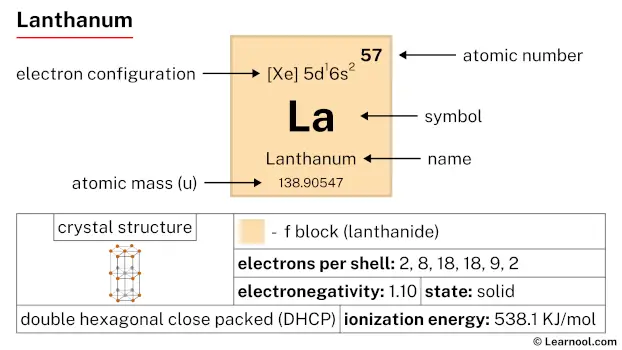 Lanthanum |
58 Ce 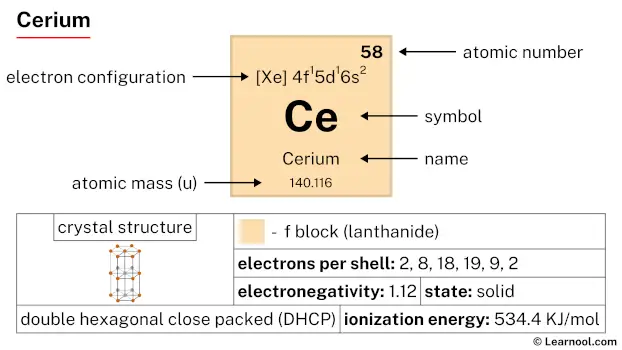 Cerium |
59 Pr 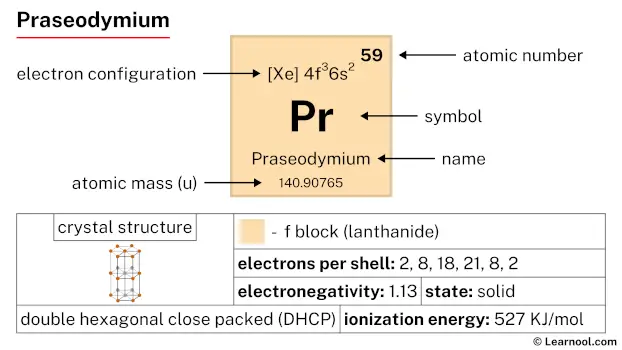 Praseodymium |
60 Nd 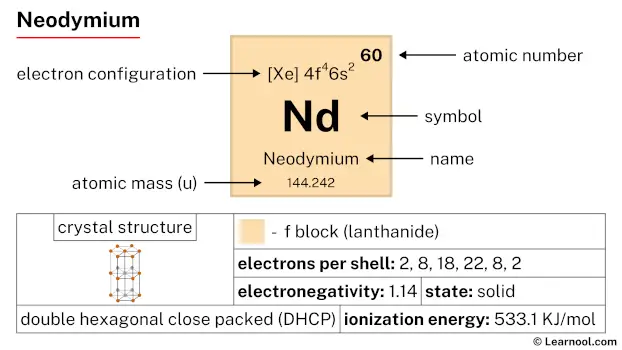 Neodymium |
61 Pm 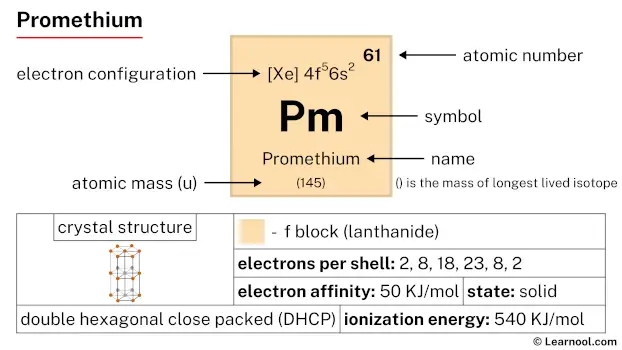 Promethium |
62 Sm Samarium |
63 Eu 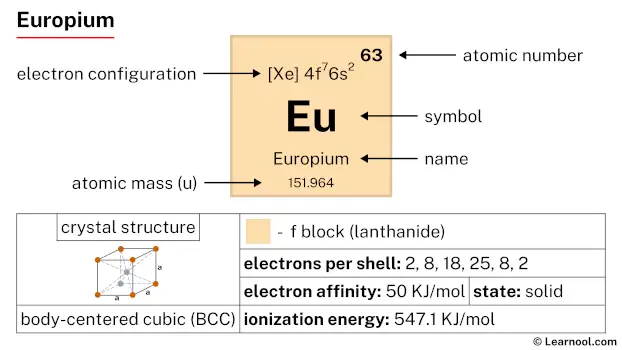 Europium |
64 Gd 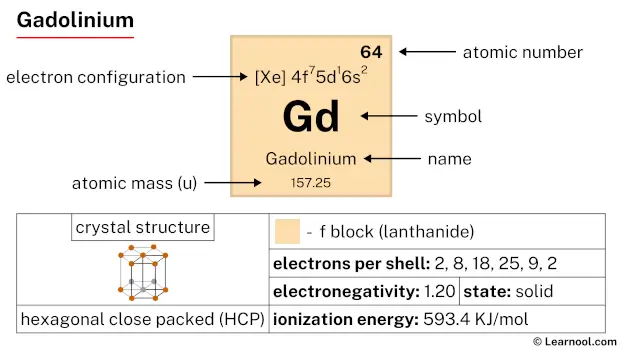 Gadolinium |
65 Tb 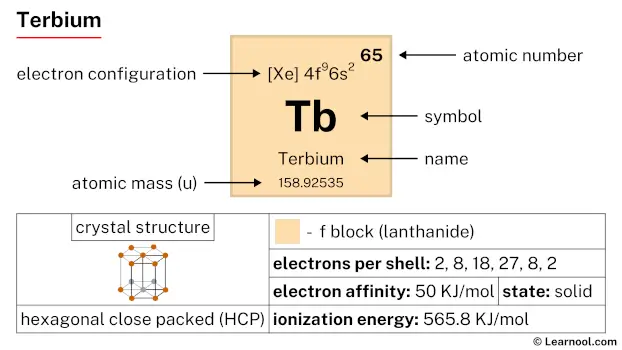 Terbium |
66 Dy 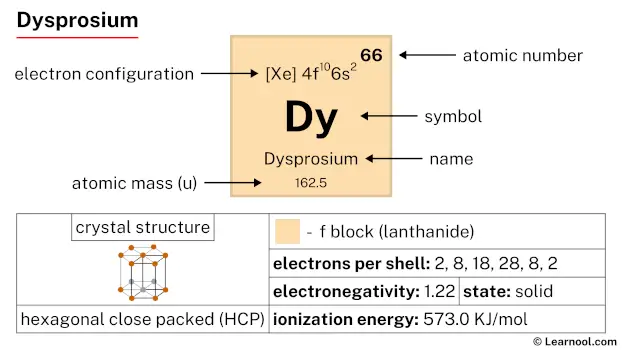 Dysprosium |
67 Ho 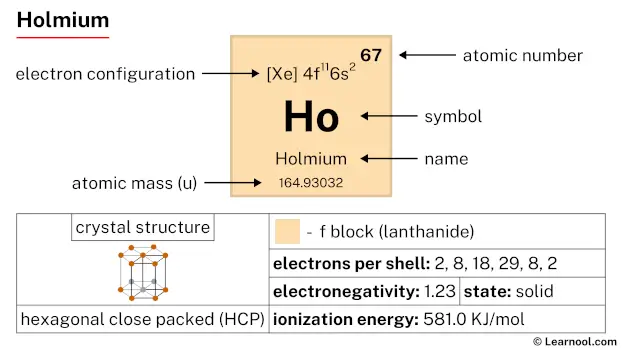 Holmium |
68 Er 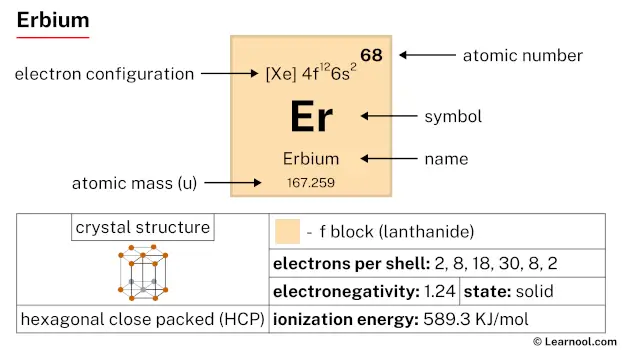 Erbium |
69 Tm 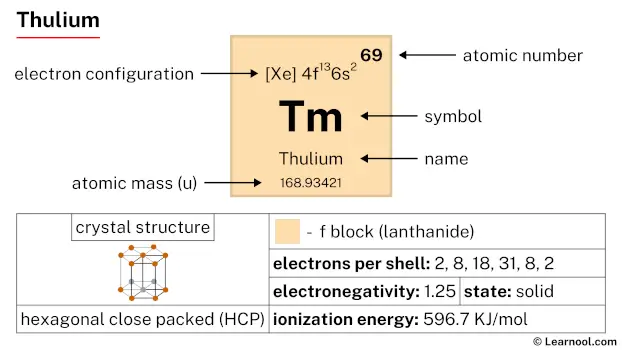 Thulium |
70 Yb 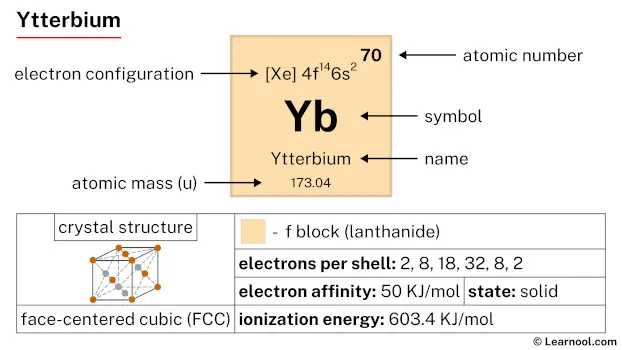 Ytterbium |
71 Lu 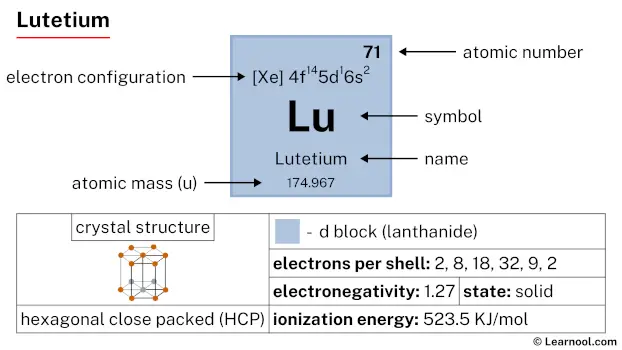 Lutetium |
|||||
| 89 Ac 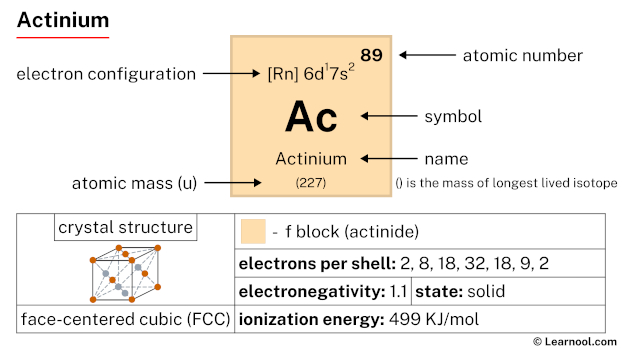 Actinium |
90 Th 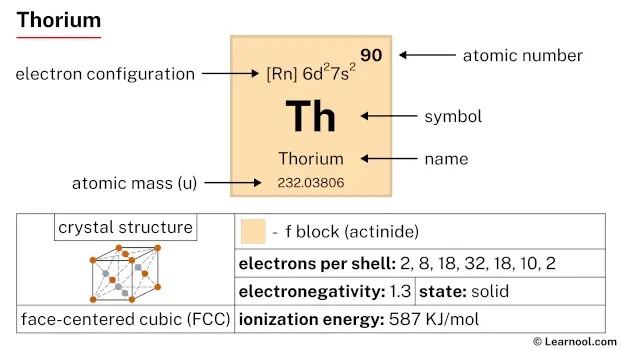 Thorium |
91 Pa 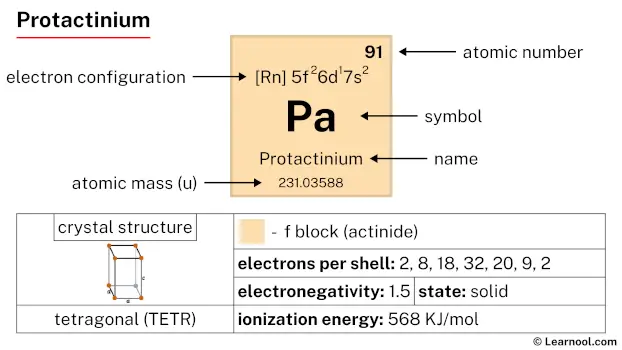 Protactinium |
92 U 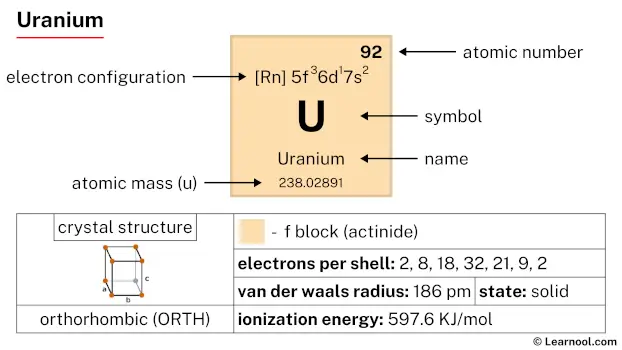 Uranium |
93 Np 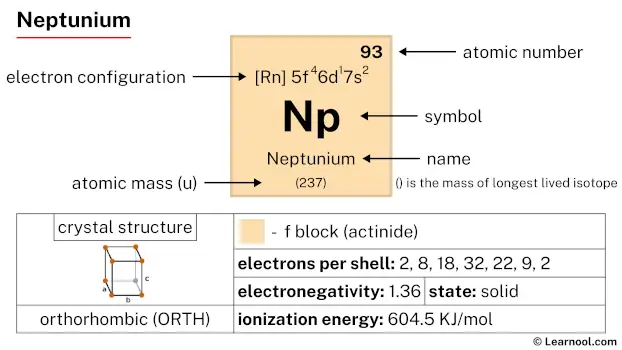 Neptunium |
94 Pu 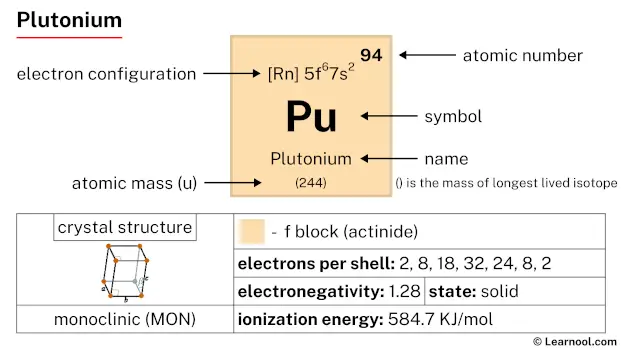 Plutonium |
95 Am  Americium |
96 Cm 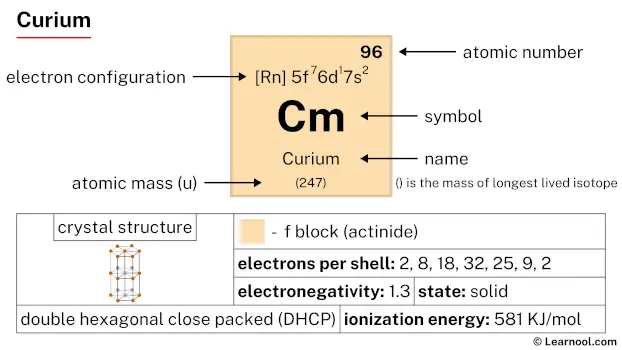 Curium |
97 Bk 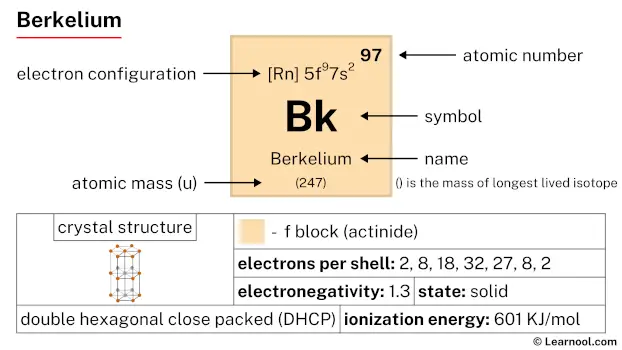 Berkelium |
98 Cf 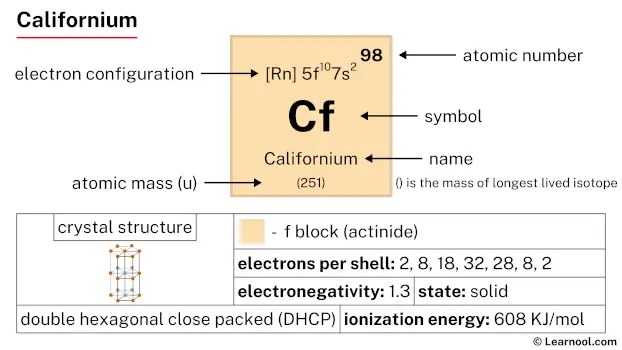 Californium |
99 Es 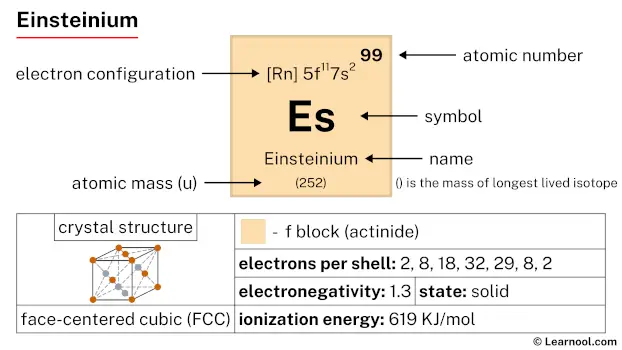 Einsteinium |
100 Fm 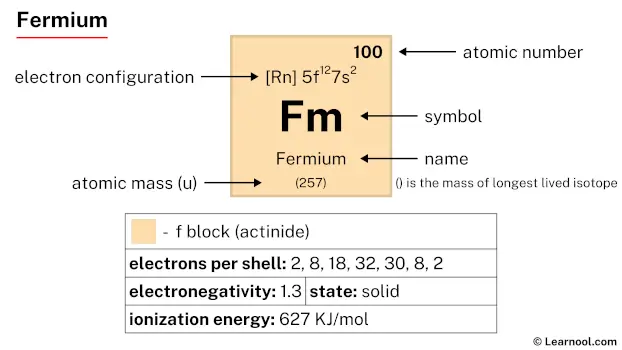 Fermium |
101 Md 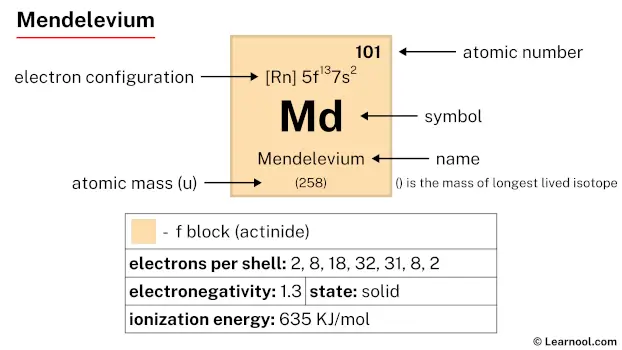 Mendelevium |
102 No 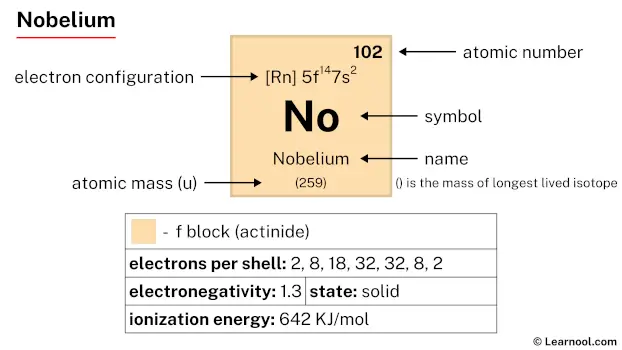 Nobelium |
103 Lr 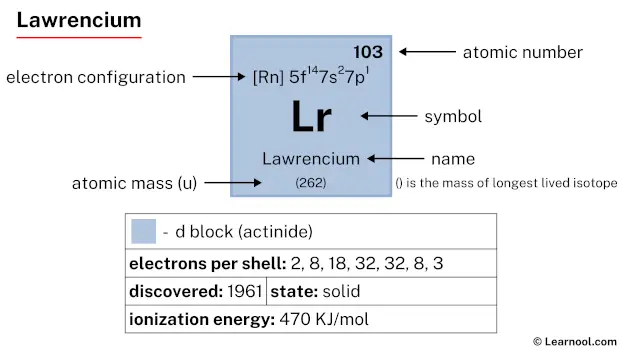 Lawrencium |
|||||
| – f block |
Samarium is found in the lanthanide series, a group of elements located at the bottom of the periodic table. Specifically, in period 6, between promethium (Pm) and europium (Eu).
Element information
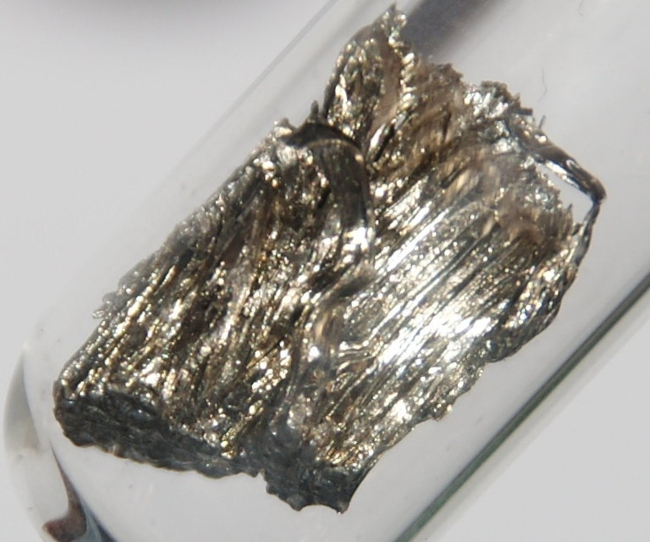 |
|
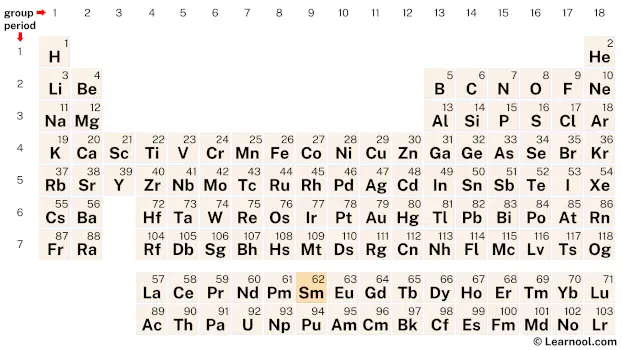 |
|
| Origin of name | named after Colonel Samarsky, a Russian mine official |
| Symbol | Sm |
| Atomic number (Z) | 62 |
| Atomic mass | 150.36 u |
| Block | f-block |
| Period | 6 |
| Classification | Lanthanide |
| Atomic radius | 180 pm |
| Covalent radius | 198±8 pm |
| Melting point | 1072 ℃, 1962 ℉, 1345 K |
| Boiling point | 1900 ℃, 3452 ℉, 2173 K |
| Electron configuration | [Xe] 4f6 6s2 |
| Learn how to write: Samarium electron configuration | |
| Electrons per shell | 2, 8, 18, 24, 8, 2 |
| Learn how to draw: Samarium Bohr model | |
| Crystal structure | Rhombohedral |
| Phase at r.t | Solid |
| Density near r.t | 7.52 g/cm3 |
| Main isotopes | Samarium-144, Samarium-149, Samarium-150, Samarium-152, Samarium-154 |
| Natural occurrence | Primordial |
| Oxidation state | +3 |
| Electronegativity (Pauling scale) | 1.17 |
| Protons Neutrons Electrons |
62 88 62 |
| Learn how to find: Samarium protons neutrons electrons | |
| CAS number | 7440-19-9 |
| Discovered by | Lecoq de Boisbaudran in 1879 |
History

Samarium was first discovered by a Swedish chemist, Paul Émile Lecoq de Boisbaudran in 1879. He obtained the element from the mineral samarskite, which had been discovered in 1847 in Russia’s Ural Mountains. The mineral was named after Colonel Vasili Samarsky-Bykhovets, a Russian mine official who had ordered its analysis.
Lecoq de Boisbaudran initially named the element “samaria” after the mineral from which it was isolated. However, the name was changed to “samarium” to avoid confusion with another rare earth element named after the same mineral.
The isolation of samarium was a difficult task, as the element is found in low concentrations in the mineral samarskite. It was not until the development of ion-exchange and solvent extraction methods in the mid-20th century that samarium could be extracted in larger quantities.
Today, samarium is primarily produced by ion-exchange and solvent extraction methods from the minerals monazite and bastnäsite, which are abundant in Brazil, India, and the United States.
Occurrence and production
Samarium is found in small amounts in various minerals, including monazite, bastnasite, and samarskite. Monazite, which contains 2.8% samarium oxide (Sm2O3), is the most important source of samarium. Bastnasite and samarskite contain less samarium, but they are still significant sources of the element.
Samarium can be produced through ion exchange or solvent extraction from monazite or bastnasite ores. The metal itself is obtained through reduction of its oxide with reactive metals such as calcium, or through electrolysis of a molten mixture of its chloride and sodium chloride.
Properties
Samarium is a silvery-white metal that is relatively soft and malleable.
It has a melting point of 1072 ℃ and a boiling point of 1900 ℃.
Samarium is paramagnetic, meaning it is weakly attracted to magnetic fields and can be magnetized.
It has four stable isotopes and seven radioactive isotopes.
Samarium is a rare earth element and belongs to the lanthanide series of elements.
It has a high electrical conductivity and is used in carbon arc lighting for the film industry.
Samarium oxide is used in the production of samarium-cobalt magnets, which are some of the strongest permanent magnets known.
Applications
Permanent magnets
Samarium-cobalt (SmCo) magnets are among the strongest types of permanent magnets available. They are used in various applications such as electric motors, headphones, and computer hard drives, where strong magnetic fields are required in a small size.
Catalysts
Samarium compounds can be used as catalysts in a variety of reactions, including the conversion of alkenes to alkanes and the oxidation of alcohols. The use of samarium catalysts can lead to increased efficiency and selectivity in chemical reactions.
Nuclear reactor control rods
Samarium-149 is a stable isotope that can absorb thermal neutrons. This property makes it useful in the manufacture of control rods for nuclear reactors, which are used to regulate the fission rate and prevent runaway reactions.
Lighting
Samarium-doped calcium sulfate is used in some types of fluorescent lamps to produce a red-orange light. This is because samarium ions absorb energy and emit light in this wavelength range.
Medical imaging
Samarium-153 is a radioactive isotope that can be used in imaging studies to detect cancer and bone metastases. It emits gamma rays that can be detected by a gamma camera, allowing for precise imaging of affected tissues.
Glass coloration
Samarium oxide is sometimes used as a coloring agent in glass production. It can produce a yellow-green tint in glass when added in small amounts, and a pink color when added in larger amounts.
Interesting facts
Samarium is named after the mineral samarskite from which it was first isolated in 1879.
Samarium has seven stable isotopes, more than any other lanthanide element.
Samarium oxide is used as a neutron-absorbing material in nuclear reactors.
Samarium cobalt magnets are some of the strongest permanent magnets available.
Samarium is paramagnetic at room temperature, which means it is weakly attracted to magnetic fields and is used in magnetic alloys.
Samarium has a relatively low melting point for a metal, at 1072 ℃.
Samarium is used in a variety of specialized applications, such as in carbon arc lighting, infrared absorbing glass, and the control rods of nuclear reactors.
Related
More elements
External links
- https://www.rsc.org/periodic-table/element/62/samarium
- https://en.wikipedia.org/wiki/Samarium
- https://www.britannica.com/science/samarium
- https://www.chemicool.com/elements/samarium.html
- https://pubchem.ncbi.nlm.nih.gov/element/Samarium
- https://www.thoughtco.com/samarium-facts-4136761
- https://www.livescience.com/38162-samarium.html
Deep
Learnool.com was founded by Deep Rana, who is a mechanical engineer by profession and a blogger by passion. He has a good conceptual knowledge on different educational topics and he provides the same on this website. He loves to learn something new everyday and believes that the best utilization of free time is developing a new skill.
